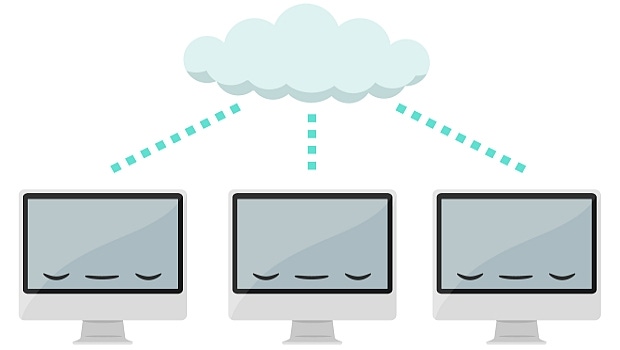CloudJumper originates from the personnel and resources of nGenx, itself a spinoff of telecommunications provider Q-Comm.

 CloudJumper, a workspace-as-a-service platform provider, officially opened Tuesday as a spinoff of cloud-based application provider nGenx.
CloudJumper, a workspace-as-a-service platform provider, officially opened Tuesday as a spinoff of cloud-based application provider nGenx.
The nWorkspace platform offers partners and customers a choice of licensing models, including named user and concurrent user licensing options. It enables strategic service providers interested in cloud-based desktop and application delivery services to benefit from the platform.
 The concurrent user model has been formulated for workspace-as-a-service delivery and differs from a named user model by virtualizing a fixed number of licenses across the network as opposed to device-specific license allocation. In this model, a CloudJumper license server administers a pool of licenses to be shared with fees based on the maximum number of devices that can access the platform simultaneously.
The concurrent user model has been formulated for workspace-as-a-service delivery and differs from a named user model by virtualizing a fixed number of licenses across the network as opposed to device-specific license allocation. In this model, a CloudJumper license server administers a pool of licenses to be shared with fees based on the maximum number of devices that can access the platform simultaneously.
The number of concurrent licenses determines the number of devices – including desktops, laptops, tablets and smartphones – that can run CloudJumper workspace as a service concurrently.
CloudJumper originates from the personnel and resources of nGenx, itself a spinoff of telecommunications provider Q-Comm.
In a Q&A with Channel Partners, Max Pruger, CloudJumper’s chief sales officer, talks about the company’s ambitious growth plans as a 100 percent channel-focused organization. He oversees all channel operations for CloudJumper.{ad}
Channel Partners: What prompted the need to spin off CloudJumper as a separate company?
Pruger: There [are] a couple of reasons for that. The main one is that really we can focus on our core service and growing out the channel. I could probably make a pretty good argument that we’re one of the biggest and fastest growing within the [workspace as a service] channel, and at the same time we’ve got a lot of momentum behind us on the enterprise-level accounts, so things like adding the current user model, which I think we do in a pretty unique way that is very elegant … versus just getting a black screen when you log in if you don’t have enough concurrent licenses there, which is typically what happens.
I will say, too, part of it is cosmetic. The CloudJumper name I think is a lot more reflective of what the company and organization does as a whole. We do obviously help our partners and channel get their customers jumping to the cloud. Cloudjumper.com formerly was owned by a skydiving company … and lo and behold about a month ago, I happen to take a look and cloudjumper.com was available. So it was sort of karma and we purchased that name, and so we’re going to have the official cloudjumper.com URL.
CP: What will the creation of CloudJumper mean for the channel, and will nGenx partners be part of this? Will CloudJumper have its own partner ecosystem?
MP: nGenx is going to remain and the legacy business is going to remain in nGenx. CloudJumper is really going to focus on …
{vpipagebreak}
… [workspace as a service] and the cloud [workspace as a service] business. The beauty of our contracts is that, from a channel perspective, they’re assignable, so the cloud workspace business will immediately transition over to CloudJumper. So for our white-label partners, they’ll automatically be CloudJumper partners as well.
Because of nGenx’s history and the way that nGenx grew up, we’re primarily in the telco agent space, so even though nGenx has a lot of really good name recognition in that space, the vast majority of our growth today is coming from our white-label partner space, which are mostly MSPs, and we didn’t have a lot of penetration prior to a year ago before I joined. So for us, we’re going to continue growing that channel significantly. We will continue to heavily invest and market to MSPs and the white label partner channel.
CP: Does CloudJumper have a partner strategy at this point? If so, how is it different than nGenx’s?
MP: We absolutely have a partner strategy and it’s really just an extension of what we were doing at nGenx. nGenx always has been and CloudJumper will continue to be a 100 percent channel company. That being said, we have different channels, so we will continue to support agents and telcos through our agent channel. We have an accounting channel, so we’re a certified Quickbook host, so we do Quickbook, we do Sage, Abila, MIP, Peachtree, Great Plains and so on, so we have that accounting channel.
We have an ISV channel, so we have ISVs that have on-premises, legacy-type applications that are trying to bring them to the cloud, so we work with them. We take their applications and do a sort of SaaS type of environment for them, so Gold Mine is one example. In fact, we just inked a deal earlier this month with a very large ISV, so we will be making an announcement about that. So we’re pretty excited about that.
And of course, on the white-label partner side, we will continue to partner with them. The model on the white-label partner side is changing somewhat and it’s really just because of demand in the industry, and because of what we’re seeing in the industry and the adoption of [workspace as a service]. In my opinion, there’s nothing that consumes more infrastructure resources than application hosting and [workspace as a service]. Because of that, we’ve got larger data centers coming to us trying to deliver a [workspace as a service] solution and they couldn’t, and so they’re asking us to do that. Another announcement that we’re going to have is we are spinning up a new data center. They tried to offer a [workspace as a service] solution on numerous occasions and failed, and they have now come to us and said we want to offer this through our channel, so we’re going to be the back end for that. We were trying to get two new data centers out on May 1 and it’s looking like one will be …
{vpipagebreak}
… out and the next one should be out three to four weeks later.
CP: Is there a lot of competition in the workspace-as-a-service market? How does CloudJumper stand out?
MP: I think we are actually in the very early adopter stage. There are a lot of desktop-as-a-service (DaaS) companies, so just from a definition perspective, the way that we define DaaS versus [workspace as a service] is that DaaS is an empty shell. So typically we get the question of how do you guys compare to Amazon, and Amazon is a perfect example of DaaS and what you get with Amazon is an empty shell. By the time that you add in everything that you need in order to actually run an office, so things like Active Directory, patching, antivirus, backup, disaster recovery, support, application deployments and so on, not only are you significantly more expensive, but it’s a much more inferior solution.
So there [are] lots of DaaS providers … but very, very few that can do it at scale and do it at the disruptive pricing that we have today.
You can continue using those 50 different tools that you currently use to deliver your solution, or you can focus on your core competency and let us do it from a single pane of glass. So I think that’s where we are today in the [workspace as a service] model as well.
CP: Where do you see CloudJumper and the workspace as a service market a year from now?
MP: From a sales perspective, I started roughly about a year ago and our sales have increased by an order of magnitude; we are onboarding more seats today by a factor of roughly 20 times than we were on the day that I started. So we’re seeing significant momentum there. And really, that’s kind of my background. To give you an idea, when I started at Kaseya, it was a $2-$4 million company in 2006, and by 2010, we were a $100 million company. The financials are obviously different than nGenx because it’s been around a long time, but that type of hyper growth is what we’re expecting and what we have been on target since I started with the company.
Obviously the market is changing and … I think we’re even earlier than the early adopter phase, so who knows exactly where the market is going to go. But I do see two trends. On the high end, you’ve got really large companies that are getting out of this business because they can’t do it cost effectively. On the low end … you’ve got a lot of these small companies that are now trying to get into this industry and offer a workspace solution. They’re going to enter the market, they’re going to make some noise, and there will be a time of consolidation and going out of business. So you’ll see that.
I think a year from now we’ll still be in the early adopter phase for this, so I think more entrants, smaller entrants will come into the market. I think you’re going to see significant adoption from MSPs because this really is kind of the next evolution of managed services. The economics made sense of moving servers to the cloud about four or five years ago, specifically from the point of what we’re doing. From a pricing perspective, we’re making the economics make sense as to workstations in the cloud, and then we’re giving the MSPs the tools to do this in a turnkey fashion.
Read more about:
AgentsAbout the Author(s)
You May Also Like


